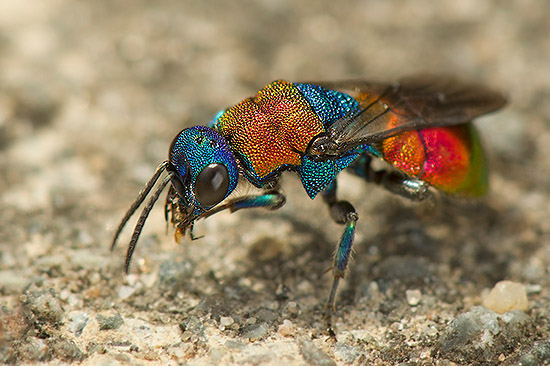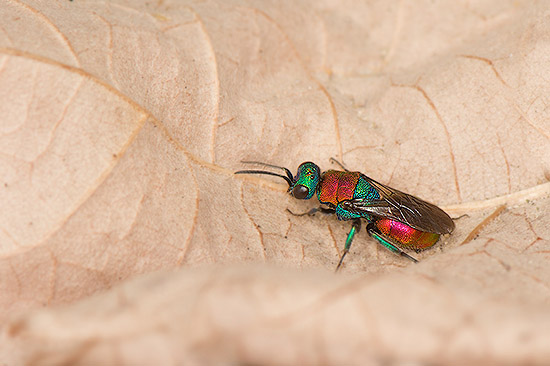In june 2014, in a seemingly very peaceful part of my hometown Gent, my attention was caught by lots of tiny burrows between the cobbles and on the footpath. Nothing is what it seems, as the place turned out to be the scenery of a real struggle for survival of tiny but fascinating creatures.
Here's an image of the scenery.
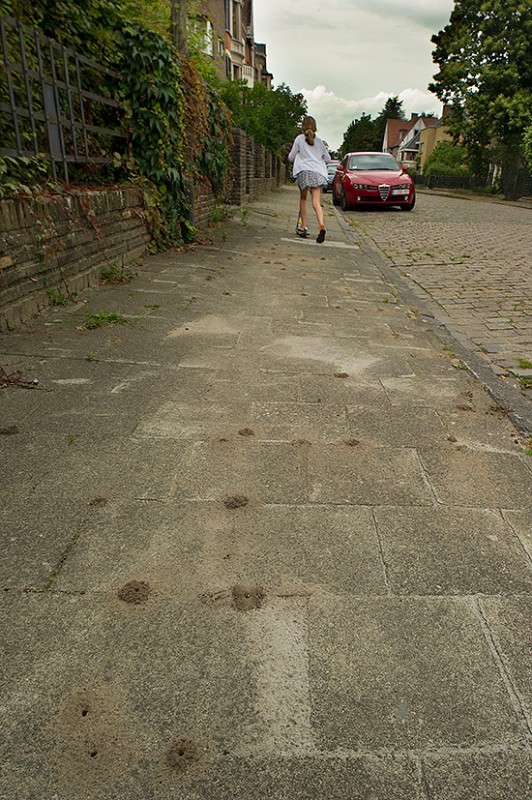
I knew the burrows had to be made by bees or wasps, so I decided to come back on a sunny day to find out which were the inhabitants of the little burrows. I had observed previously Cuckoo Wasps in town so I secretly hoped that I might even find some of these tiny parasitic wasps too.
On the next day, during midday the place was covered with buzzing and busy wasps and bees. At least six different wasp and bee species were present on and around the footpath. My attention was immediately caught by a resting Cuckoo wasp with striking colours, Hedychrum nobile. Under here an image of the resting wasp.
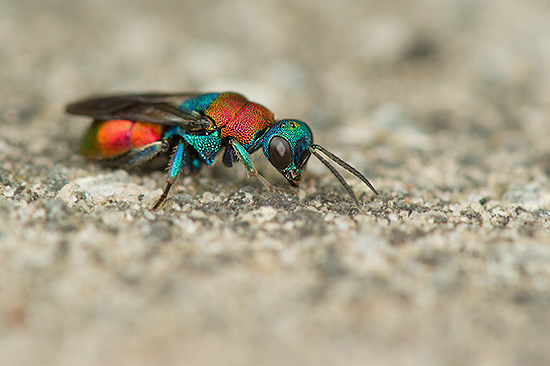
I soon found out that most of the relative big burrows had been made by Weevil Hunting wasps, Cerceris arenaria, a species of Digger Wasp. When having a closer look, they seemed to be constantly bringing in Weevils to their nest. Under here an image of a Weevil Hunting Wasp struggling with its prey, Othiorhynchus sulcatus.
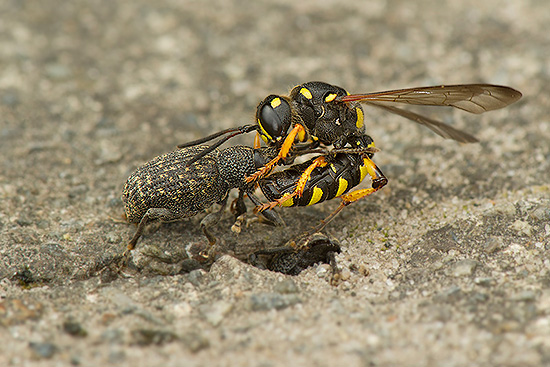
On the next images the Wasp is bringing the Weevil to its nest, which will serve as food for the larvae.
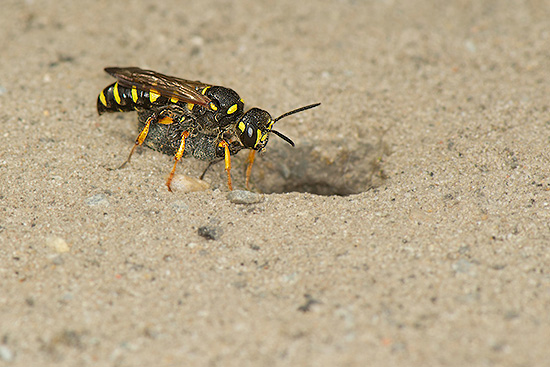
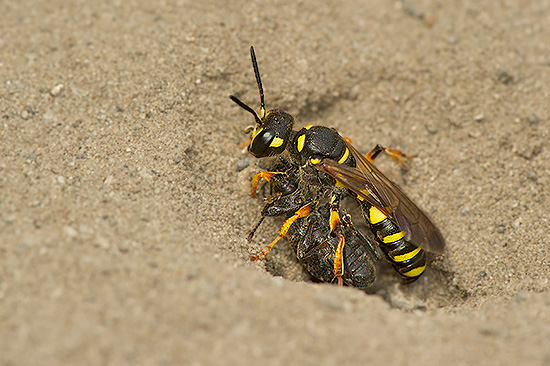
I was seriously impressed by the strength of the Weevil Hunting Wasps, who were apparently able to fly over long distances with their prey, which weighs almost as much as the Wasp itself, and this without experiencing the slightest problems.
At home I found out that - as expected - the Jewel Wasp, Hedychrum nobile, parasitizes on the Weevil Hunting Wasps. So I decided to come back and wait if I could observe the Cuckoo Wasps entering the burrows of their host. After having spent several hours I was able to make some decent images of the Cuckoo Wasps around the burrows. Under here, an image from a Jewel Wasp from the front.
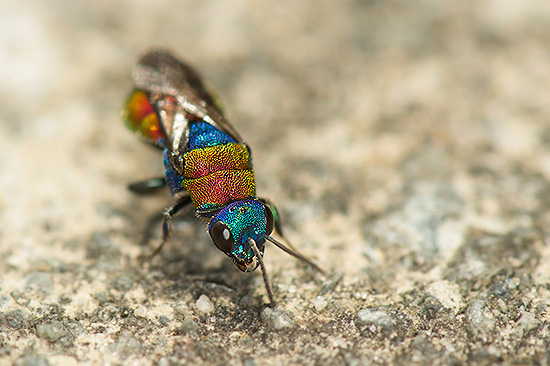
The next two images, show the Jewel Wasp before and after entering the burrow.
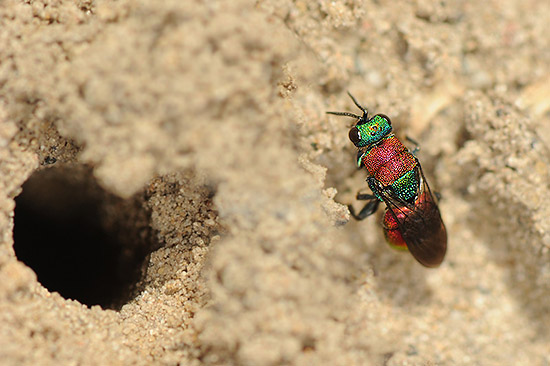
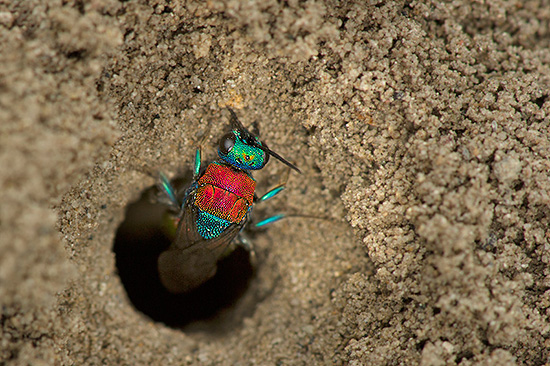
Here's some ecological background information about the Cuckoo Wasps, or Jewel Wasps.
Members of the Cuckoo Wasp family - Chrysidinae, are generally parasites or cleptoparasites, laying their eggs in host nests, where their larvae consume the host egg or larva while it is still young, then consuming the provisions. They have generally brilliantly coloured metallic-like and highly sculptured bodies. They are most diverse in desert regions of the world, as they are typically associated with solitary bee and wasp species, which are also most diverse in such areas.
Finally, two extra images of the brilliantly coloured Cuckoo Wasps. On the first image, the Cuckoo Wasp is cleaning it's face and on the second one it is resting on a leaf.
